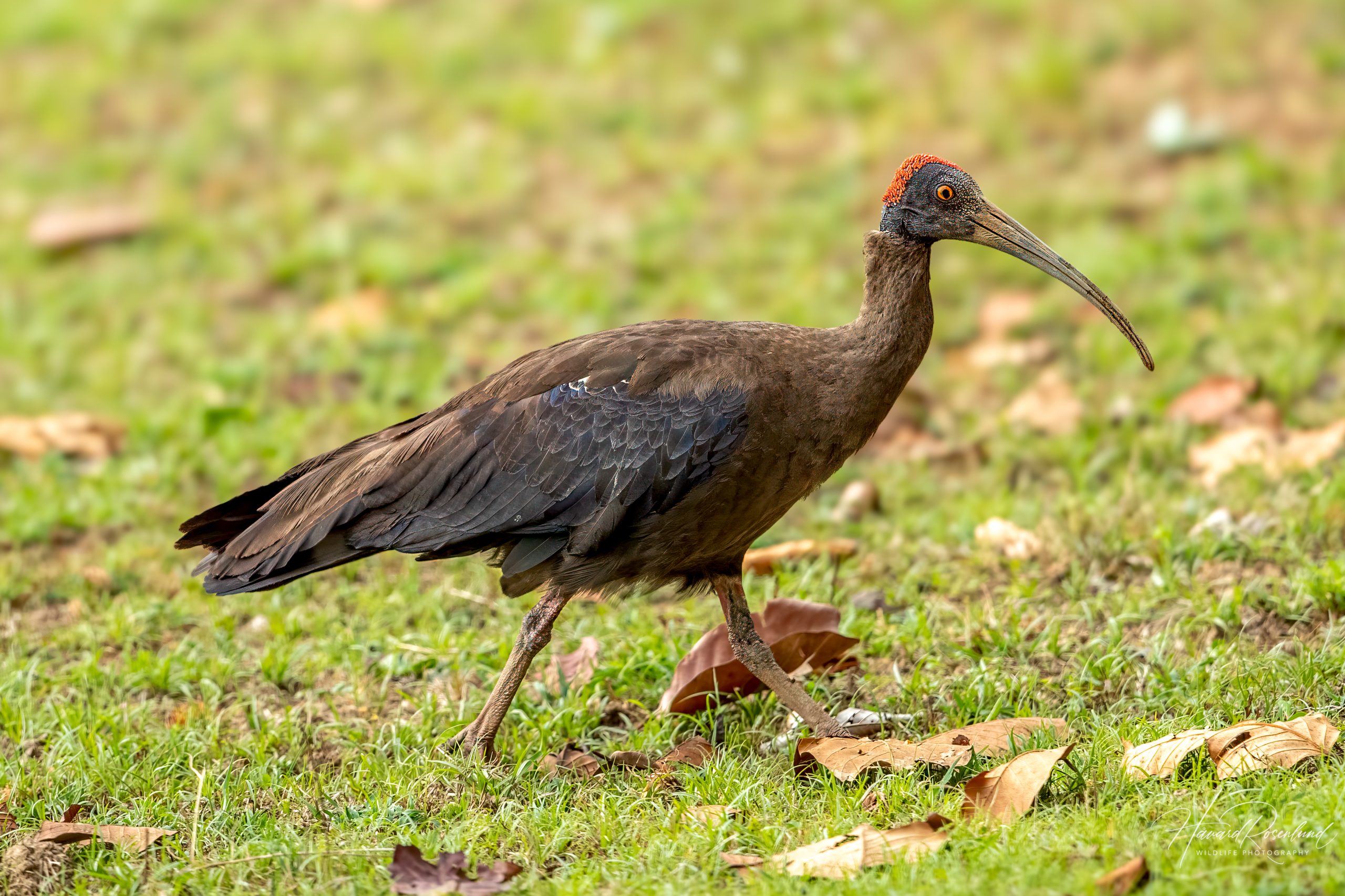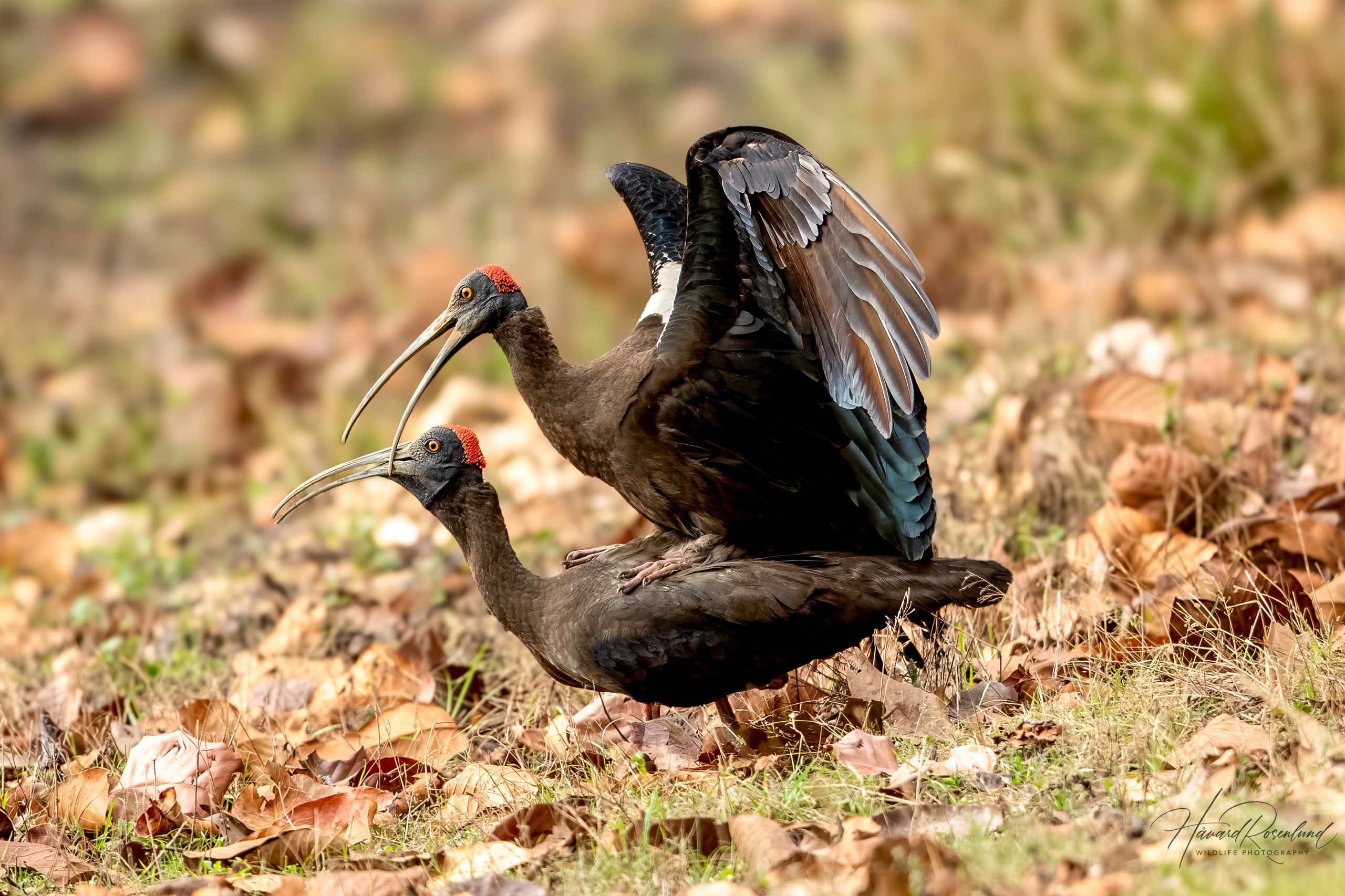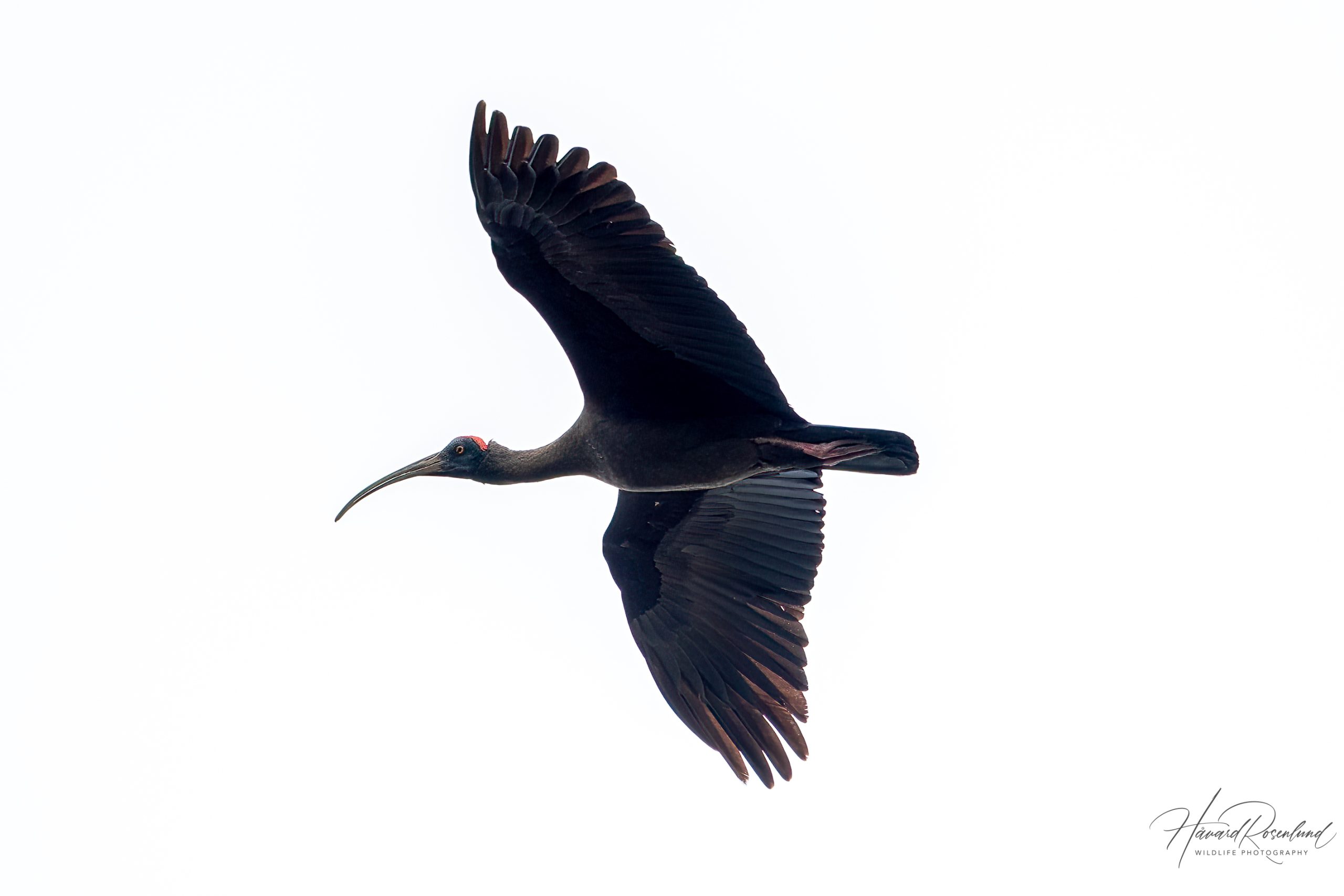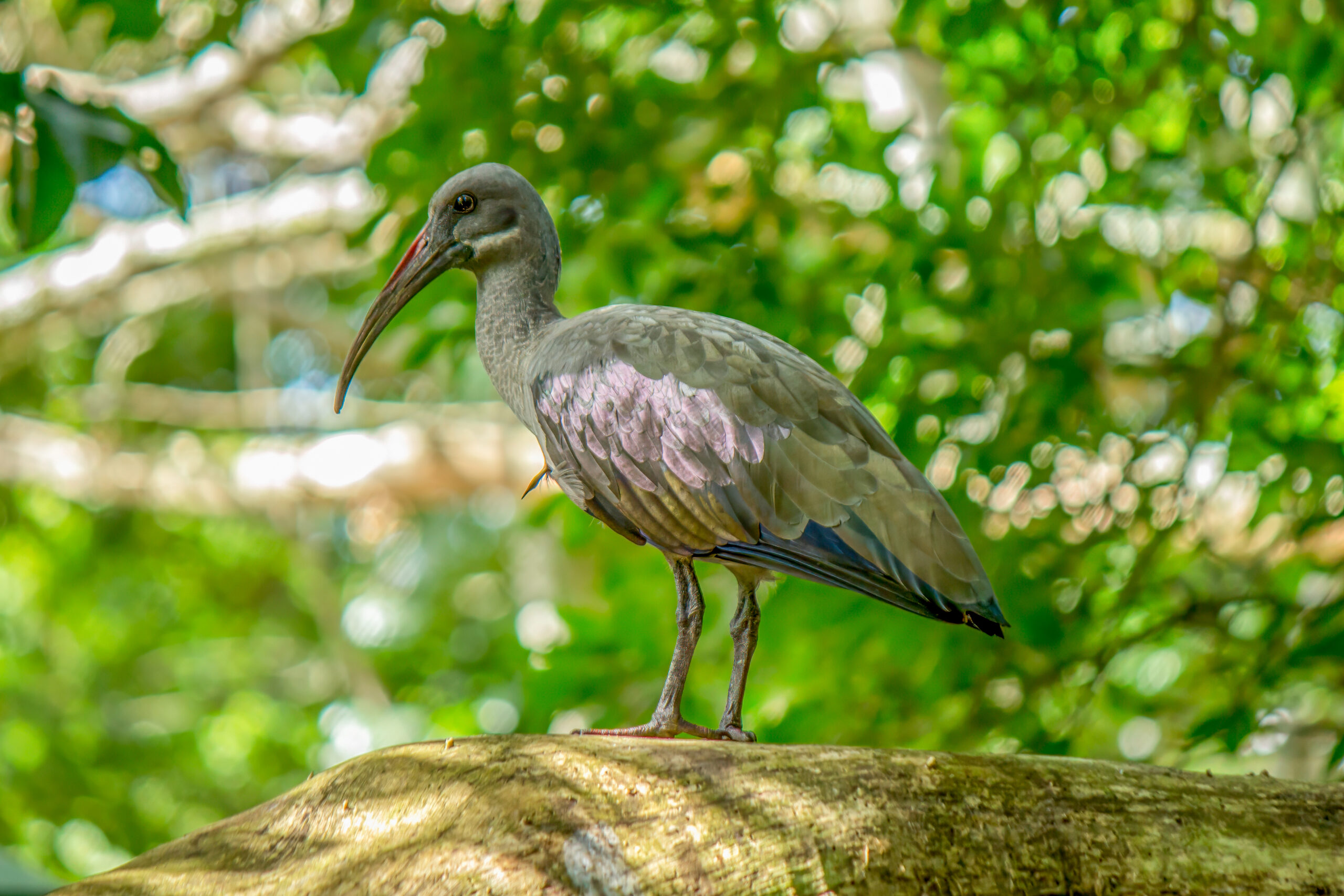Description
The red-naped ibis (Pseudibis papillosa), also known as the Indian black ibis, is a medium-sized bird native to the Indian subcontinent, including India, Nepal, and Pakistan. This species is easily identified by its dark brown plumage, a greenish sheen to its wings, and a distinct red patch on the nape of its head unique to this species. The bird has a long curved bill and reddish legs, adding to its characteristic appearance. Adults typically measure about 60-68 cm (23-27 in) in length and have a wingspan ranging from 90-115 cm (35-45 in). It is often observed in pairs or small family groups, and their loud, distinctive calls are a common sound in their habitats.
Diet & Habitat
The red-naped ibis inhabits a variety of environments, including wetlands, marshes, riverbanks, and agricultural fields. It is often seen in open, dry habitats near water bodies, as well as in urban areas and near human settlements. Its diet mainly consists of insects, small reptiles, amphibians, and a variety of invertebrates. The ibis forages by probing the soil with its long bill, often using a side-to-side sweeping motion to detect and capture prey. It is also known to consume grains and seeds, especially in agricultural areas.
Nesting
The breeding season of the red-naped ibis generally spans from March to October, with peak breeding activity occurring during the monsoon season. These birds are monogamous and form long-lasting pair bonds. They build large, stick nests in tall trees, often near water, which they line with softer materials like leaves and grass. Females typically lay 2-4 eggs, which are incubated by both parents for about 21-23 days. The chicks are altricial at birth, meaning they are born blind and helpless, relying entirely on their parents for food and protection. Fledging occurs approximately 45-50 days after hatching.
Status
The red-naped ibis is currently listed as least concern by the IUCN Red List. However, certain local populations face threats due to habitat destruction, pollution, and disturbances from human activities. Conservation efforts are focused on protecting wetland habitats and minimizing the impact of agricultural expansion and urban development.









